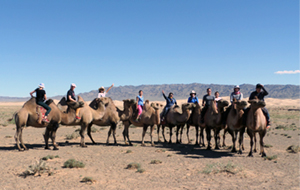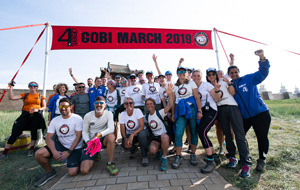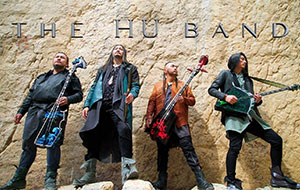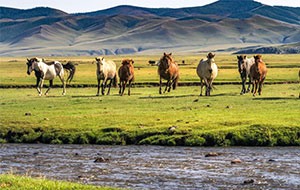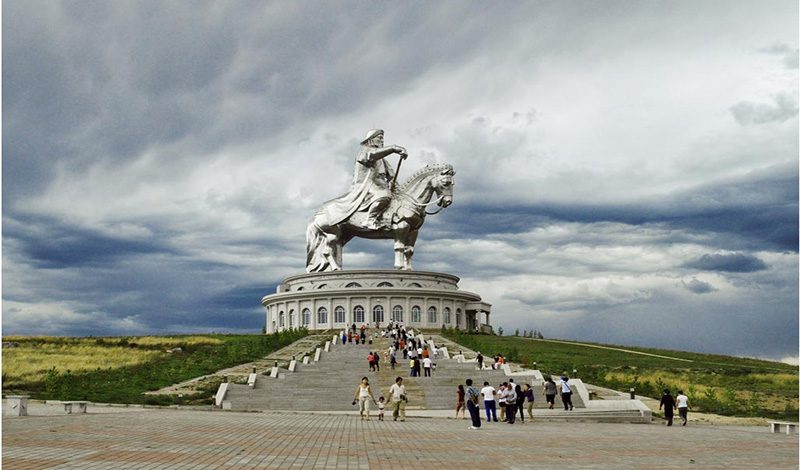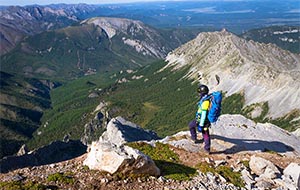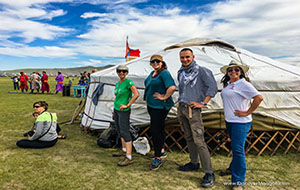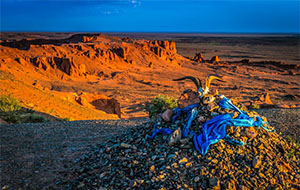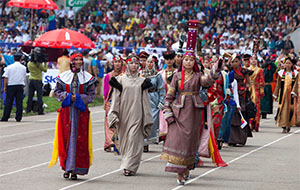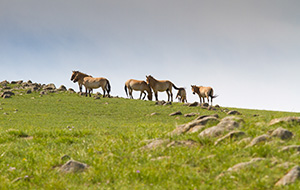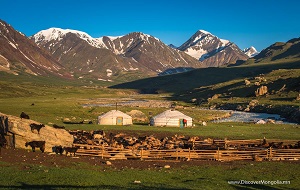These numbers show an 11% growth in tourism between 2017 and 2018. According to reports, the top nationalities of tourists visiting Mongolia are Chinese, Russian, South Korean, and American. In a survey on 3500 tourists, 60.7% revealed that nature was their reason for visiting Mongolia while 42.4% were there to witness the nomadic lifestyle. Adventures such as horseback riding and trekking made up 12.1% while 11.3% of the surveyed tourists said they were interested in Mongolia’s rich history, particularly Genghis Khan.
Why Mongolia Should Be Your Next Travel Destination
Tourism in Mongolia is on the rise and of course, with good reason. Mongolia’s long and vibrant cultural history continues to gain worldwide attention. Each year, more and more people make Mongolia a bucket list destination.
Did you know that the world’s first-ever confirmed dinosaur eggs and largest dinosaur footprints discoveries were in Mongolia’s Gobi Desert? The Great Gobi National Park spans nearly 27,000 square kilometers, making it the most prominent national park in Mongolia. A visit will immerse you in Mongolia’s nature, history and culture. It’s where you will find the Yolyn Am, Dungeneegyn Am, and Khongor Sand Dunes.

And if you’re the type of traveler who is on the hunt for daring culinary adventures, Mongolia is where you will find sheep eyeball juice, fermented horse milk or Airag, and butter that’s been left to rot inside the stomach of a yak. But beyond Mongolia’s fascinating and bizarre food, it’s also known for flavorful cuisine. Don’t miss out on Mongolian barbecue or Khorkhog or traditional dishes such as Khuushuur and Guriltai Shul.
Mongolia is also world-famous thanks to its spectacular scenic views, vibrant national cultural diversity, rare nomadic peoples, and annual festivals.
The Best Time to Travel to Mongolia
To get the most out of your visit to Mongolia, plan your travel when the weather and climate are just right. Mongolia has four beautiful seasons, and your idea of the perfect trip depends on what your favorite season is or if you’re looking forward to a specific Mongolian festival or event.
Spring in Mongolia lasts from March to mid-May. The weather can be unpredictable, and winter chills can continue until mid-April. However, it’s the perfect time to be there to welcome Mongolian nomads’ newborn animals or marvel at various species of birds. And if you’re a nature lover, the first wildflowers begin to show in the countryside, growing in the snow. March is also when residents of the Khovsgol Lake area celebrate the Ice Festival and the Thousand Camel Festival takes place.

For fun summer days, set your sights on Mongolia between mid-May and late August. Thanks to the Naadam Games, July is a peak month for tourists. And despite the summer heat, prepare your raincoat and umbrella as short bursts of rain are typical during the summer. However, it’s still an ideal time to visit the parks and temples.
During September and October - experience Mongolian autumn. There are fewer crowds during the Autumn months, making it ideal if you want to experience the Gobi Desert in peace. The first weekend of October is also when you can catch the annual Golden Eagle Festival.
And if you’re a fan of colder, frosty weather, winter in Mongolia starts November and lasts until February. In January, temperatures can fall as low as -40°C. Spending your winter in Mongolia means having the opportunity to visit the Gorkhi-Terelj National Park which is especially magical and scenic during the wintertime.
Did you enjoy this article? You’ll find more about Mongolia and other travel ideas here.


















